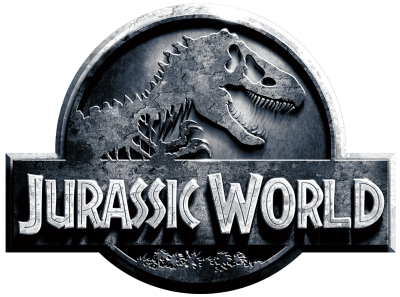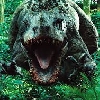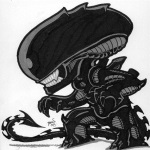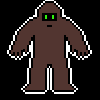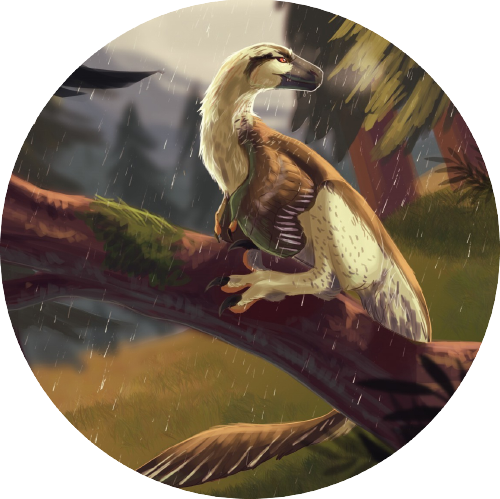
DEINONYCHUS

Length- 3.4 M
Height- 1.1 M
Weight- 73-100 Kg
Deinonychus is a genus of dromaeosaurid theropod dinosaur with one described species, Deinonychus antirrhopus. This species, which could grow up to 3.4 meters (11 ft) long, lived during the early Cretaceous Period, about 115–108 million years ago (from the mid-Aptian to early Albian stages). Fossils have been recovered from the U.S. states of Montana, Utah, Wyoming, and Oklahoma, in rocks of the Cloverly Formation, Cedar Mountain Formation and Antlers Formation, though teeth that may belong to Deinonychus have been found much farther east in Maryland.
Paleontologist John Ostrom's study of Deinonychus in the late 1960s revolutionized the way scientists thought about dinosaurs, leading to the "dinosaur renaissance" and igniting the debate on whether dinosaurs were warm-blooded or cold-blooded. Before this, the popular conception of dinosaurs had been one of plodding, reptilian giants. Ostrom noted the small body, sleek, horizontal posture, ratite-like spine, and especially the enlarged raptorial claws on the feet, which suggested an active, agile predator.
"Terrible claw" refers to the unusually large, sickle-shaped talon on the second toe of each hind foot. The fossil YPM 5205 preserves a large, strongly curved ungual. In life, archosaurs have a horny sheath over this bone, which extends the length. Ostrom looked at crocodile and bird claws and reconstructed the claw for YPM 5205 as over 120 millimetres (4.7 in) long. The species name antirrhopus means "counter balance", which refers to Ostrom's idea about the function of the tail. As in other dromaeosaurids, the tail vertebrae have a series of ossified tendons and super-elongated bone processes. These features seemed to make the tail into a stiff counterbalance, but a fossil of the very closely related Velociraptor mongoliensis (IGM 100/986) has an articulated tail skeleton that is curved laterally in a long S-shape. This suggests that, in life, the tail could bend to the sides with a high degree of flexibility. In both the Cloverly and Antlers formations, Deinonychus remains have been found closely associated with those of the ornithopod Tenontosaurus. Teeth discovered associated with Tenontosaurus specimens imply they were hunted, or at least scavenged upon, by Deinonychus.
STENONYCHOSAURUS
.png)
Length- 2.4 M
Height- 0.9 M
Weight- 60 Kg
Stenonychosaurus is a genus of troodontid dinosaur from the Late Cretaceous Dinosaur Park Formation of Alberta, Canada, as well as possibly the Two Medicine Formation. The type and only species, S. inequalis, was named by Charles Mortram Sternberg in 1932, based on a foot, fragments of a hand, and some caudal vertebrae from the Late Cretaceous of Alberta. S. inequalis was reassigned in 1987 by Phil Currie to the genus Troodon, which was reverted by the recognition of Stenonychosaurus as a separate genus from the possibly dubious Troodon in 2017 by Evans et al. and also later in the same year by Van der Reest and Currie.
FIGHT!!!
A lone Deinonychus is drinking from a wide and deep, fast flowing river which is starting to freeze over with the beginning of winter. He was recently kicked out of his pack when he challenged the alpha male and lost… badly. His leg has only now, completely healed from the injury he sustained in the battle and even then he still must tread lightly on it, and watch out for any signs of danger as many predators would think of him as an easy meal. Without a pack to support him, he can’t get the amount of food he needs to sustain himself. Instead he has to settle for bugs and lizards and eggs. And as winter tightens its grip on Alaska this food will be even harder to come by. The Deinonychus hears a rustle in the bushes behind him. He snaps his head up and peers into the ferns that line the base of the rock wall running along the edge of the stream. He sees nothing, but can smell a familiar scent in the air that he can’t quite put a claw on. Then another rustling sound issues from the ferns and before the Deinonychus can even put his head up, he feels something small ram into the back of him, sending him sprawling onto the weak ice which cracks beneath his weight. He plunges into the icy depths, his arms and legs flailing helplessly. Suddenly, he breaks the surface, taking in great gasps of air, only to be pushed back under when something small lands on top of him. The Deinonychus tries to wriggle its way out of the unknown attacker's grip but only makes the claws dig in deeper. At last he manages to free himself and put his head out of the water. The mystery attacker is nowhere to be seen.
Still in a slight shock from the attack, the Deinonychus makes its way to a piece of floating ice, hauls itself up and out of the water, jumps onto the bank, and clambers up the rock wall into the thick snow-covered conifer forest. As he walks along, he can’t help thinking that he’s being followed. It feels as though all the eyes in the forest are watching him… Waiting to strike. The Deinonychus snaps his head from side to side, watching for any sign of movement. Got it… Out of the corner of his eye the Deinonychus spots a flurry of movement coming from behind a huge conifer tree. With a squawk the Deinonychus runs to cut the mysterious creature off. However he is too enthusiastic in his pursuit and trips on a protruding tree root. He sprawls forward and goes tumbling into a steep ravine. He hits the bottom with a sickening thud. The Deinonychus opens his eyes. He should be looking up into the canopy of trees far above him. Instead he is looking into the face of one, very angry looking Stenonychosaurus. He gets up quickly and backs off hissing wildly at the Stenonychosaurus. Thinking that the Stenonychosaurus will let him go, the Deinonychus turns away. Big mistake. The Troodontid leaps on him and the two roll around in a mass of teeth, feathers and claws. They break apart, and the Stenonychosaurus runs at the Deinonychus again. The Deinonychus wastes no time. It sprints up the side of the ravine and out into the forest not caring which way its legs take it. As it zig zags through the trees, it realises its mistake. Too late… It manages to skid to a halt just in time. The Stenonychosaurus however does not. With shrieks of shock both Dinosaurs fall from the cliff and are swept away by the river in a wave of fury. The Deinonychus looks around for the Stenonychosaurus, but the Troodontid finds him. It lunges out of the water and grabs a hold of the Deinonychus’ neck. The Deinonychus shrugs him off easily and pushes him back under the water, slashing at his flanks with his sickle claws. After several minutes of struggling the water around the Deinonychus stills, and the body of the Stenonychosaurus floats up to the surface.
So, 3 points got to… the Deinonychus!
Why? Well for a start, Deinonychus was bigger. Its weight would have been an excellent advantage. Plus it’s sickle claw would most likely be slightly bigger than Stenonychosaurus’ and it had a more potent bite force as most resources seem to have it as between 4,100 and 8,200 newtons, which I don’t think Stenonychosaurus would really come close too. So again, it was the Dinosaur with the more effective weapons that won the battle.
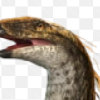 TriceratopsMember331 XP2022-12-05 20:20:00
TriceratopsMember331 XP2022-12-05 20:20:00Very nice, this is really good actually one day you'll be one of the greatest dino fights creators ever, you have a lot of potential.
Thank you very much. I just read Wiehenvenator vs Bistahieversor. Epic battle! I was going for Bistahieversor, but it was really, really good and a very even fight, so either dino could have been the winner. Also, this is kind of off the topic, but is your favourite dino Erlikosaurus?
 AllosaurusMember2112 XP2022-12-06 22:34:00
AllosaurusMember2112 XP2022-12-06 22:34:00This is a cool battle!
